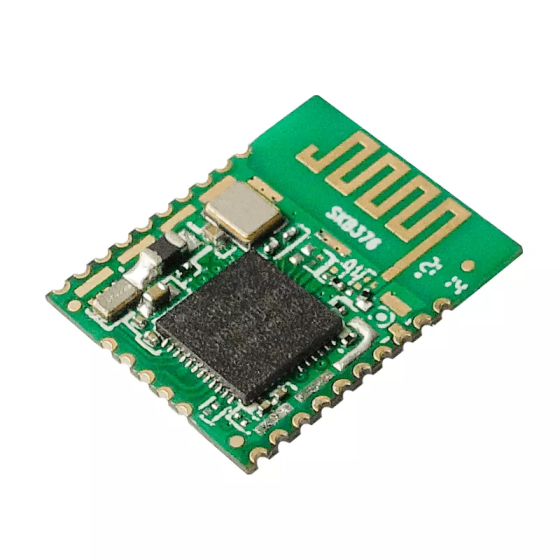We are all too familiar with bluetooth ble module technology when it is widely applied in daily life. And sometimes you will hear the term Bluetooth Low Energy (BLE). So what is Bluetooth Low Energy? What's the difference with Bluetooth? Follow the article to understand more.

Bluetooth Low Energy (BLE/Bluetooth LE/Bluetooth Smart) - Translation: Bluetooth Low Energy - is a wireless networking technology that consumes very little energy use to connect devices together.
This bluetooth ble module was originally invented by Nokia in 2006 as Wibree, before being integrated into Bluetooth 4.0 by Bluetooth Special Interest Group (Bluetooth SIG) named BLE in 2010. The main goal of integration is Optimize energy consumption.
Bluetooth Low Energy was born with the hope of bringing optimal efficiency to users through IoT devices, because of that it has been widely applied in smart technology devices with diverse fields. . Such as:
The bluetooth ble module positioning accessory tracks the location of objects with high accuracy - Samsung SmartTag. This is a device that attach to different items so that the owner can easily find it when needed.
Smart home (Smart home) with objects controlled by smartphones, For example, August Smart Lock will turn the user's phone into an electronic key.
The smart bracelet supports tracking and recording information about the user's exercise modes and data synchronization for smartphones.
In healthcare, bluetooth ble module technology applies to the CGMP device, which helps to monitor glucose levels.
Beacon, one of the latest developments in proximity marketing and location technology, is capable of identifying and sending product/promotion information to visitors in the store area via smartphone.
The central system of bluetooth ble module technology is usually a smartphone, tablet, or laptop that supports the operating systems iOS , Android , Windows Phone as well as macOS , Linux , Windows 8 and Windows 10.
4.2 Bluetooth Smart Ready (Dual mode)
First of all, the ability to consume energy to a minimum, allowing the device to operate for several months or several years with just a coin battery thanks to the mechanism that turns on when data comes in / out and turns off when data is not available continuously.
The data models and chips use to design bluetooth ble module are inexpensive and complex, so the technology is also relatively inexpensive.
BLE operates on the 2.4 Ghz ISM band, which helps to avoid interference between WiFi and Bluetooth devices.
Every technology device is not always perfect in their features; it will always have its pros and cons that are not unique to Bluetooth low energy.
The procedure for establishing a connection and transferring data is very fast (about 3 ms).
Most importantly, the integration of bluetooth ble module technology in most smartphones sold in the market today offers many advantages over other technologies.
5.2 Cons
Small data throughput: The modulation frequency of BLE waves in space is 1Mbps. This is the upper limit of the theoretical throughput. However, in practice this parameter is smaller due to the influence of many factors.
Limited distance: Theoretically, bluetooth ble module is capable of transmitting data with a maximum distance of 100m. However, in practice, this technology can only transmit with a distance of 30m and achieve high efficiency at 2 - 5m.
Factors affecting communication distance such as operating environment, antenna design, obstacles, device orientation, etc.
bluetooth ble module has 2x faster speed
The Bluetooth 5.0 connection is up to 2 times stronger than the previous 4.2 version and the range is up to 4 times longer. The maximum speed of Bluetooth 5.0 is up to 50 Mbps, with a range of up to 300m without obstructions. However, when there is an obstacle, Bluetooth will be weakened similar to Wi-Fi.
The Bluetooth 4.x standard supports a maximum speed of 1 Mbps allowing data transfer to be twice as fast, up to 2 Mbps.
Using Bluetooth consumes a lot of the phone's battery. So, bluetooth ble module LE (Low Energy) is the mode that Bluetooth Smart released to fix this problem. Because this is nothing compared to the new Bluetooth standard, Bluetooth 5.0 uses up to 2.5 times less power than the previous standard.

The most notable feature of bluetooth ble module 5.0 is the 4x increased coverage compared to the Bluetooth 4.0 generation. When connected, you no longer need to keep the devices close together as before, but can transmit data at about 75m in an unobstructed environment, this number has increased to 300 meters with Bluetooth 5, on par with Wi-Fi .
Previous generations of Bluetooth had a significant limitation that it could only connect one device at a time. This has a significant effect on the user experience, especially when listening to high-quality music.
Bluetooth 5.0 connects 2 headphones or 2 external speakers to your device
You can use bluetooth ble module 5.0 to connect 2 headphones or 2 external speakers to your device and stream audio to them at the same time. Users can also use Bluetooth 5.0 to send and receive data from multiple devices at the same time.
Although most devices on the market today equip with Bluetooth 4.2 or below, to take advantage of the full features of bluetooth ble module 5.0, you need a device with a new Bluetooth chip. On the other hand, the device with which you exchange data must also support the Bluetooth 5.0 standard for maximum speed.
Copyrights© Shenzhen Skylab Co.,LTD All Rights Reserved.

